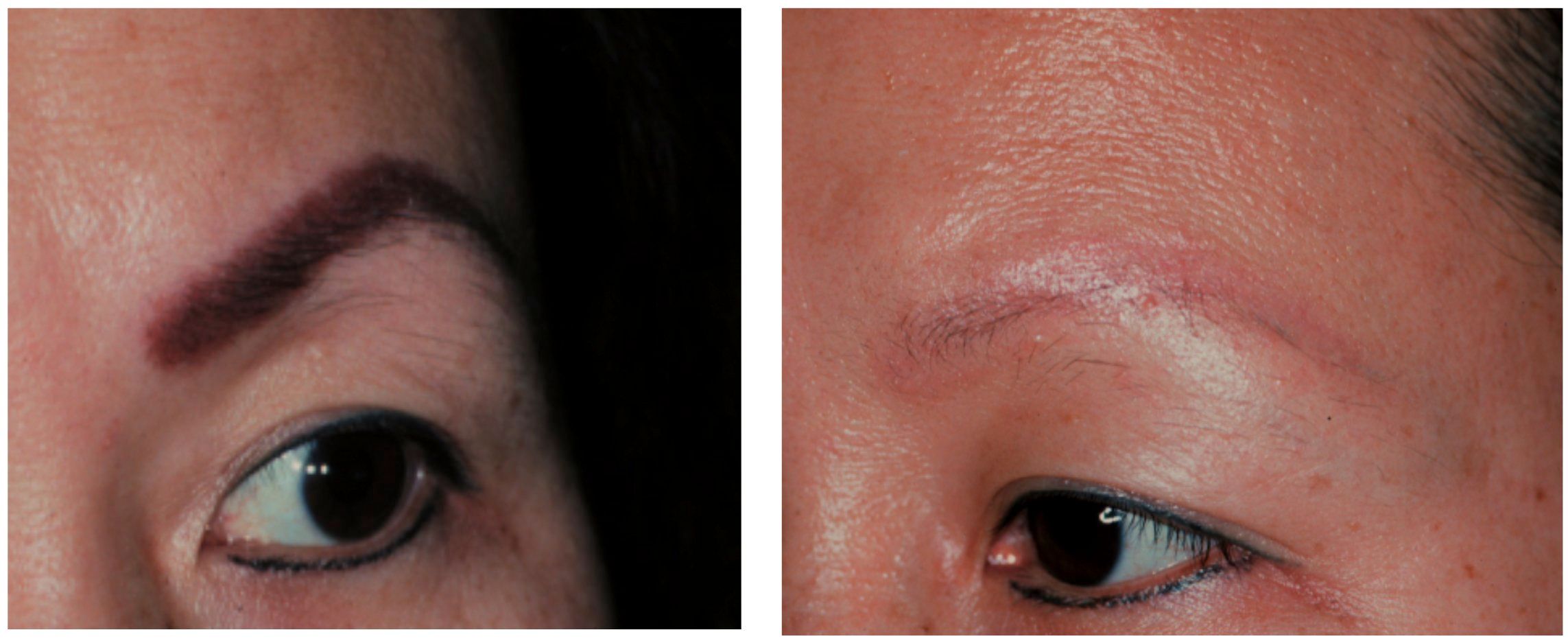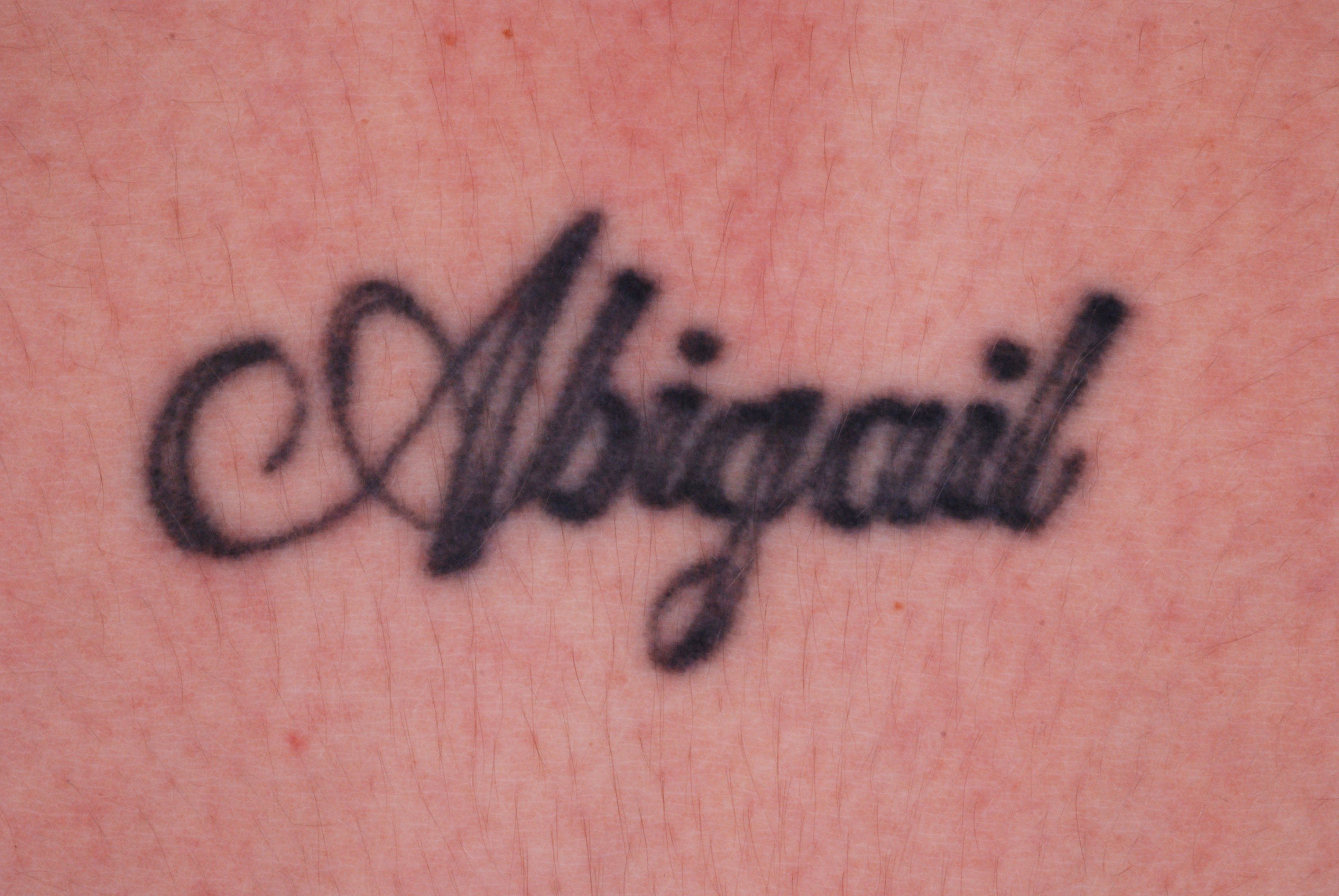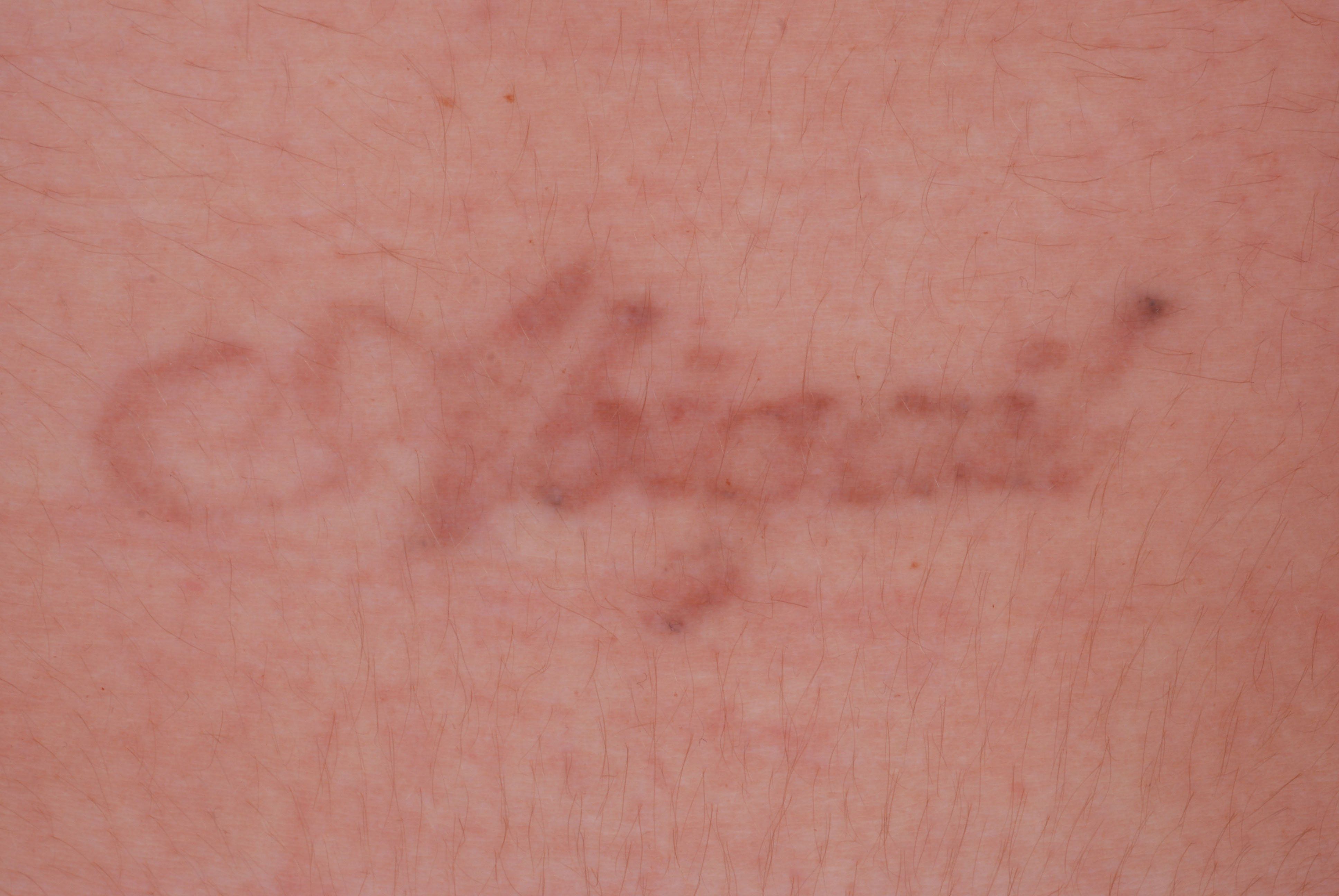- Acne
- Actinic Keratosis
- Aesthetics
- Alopecia
- Atopic Dermatitis
- Buy-and-Bill
- COVID-19
- Case-Based Roundtable
- Chronic Hand Eczema
- Chronic Spontaneous Urticaria
- Drug Watch
- Eczema
- General Dermatology
- Hidradenitis Suppurativa
- Melasma
- NP and PA
- Pediatric Dermatology
- Pigmentary Disorders
- Practice Management
- Precision Medicine and Biologics
- Prurigo Nodularis
- Psoriasis
- Psoriatic Arthritis
- Rare Disease
- Rosacea
- Skin Cancer
- Vitiligo
- Wound Care
Article
Laser tattoo removal: rethinking ink
New picosecond lasers allow for faster treatment of several once-difficult tattoo inks such as green, blue, red, orange and yellow. Meanwhile, Q-switched laser regimens continue to evolve, sometimes in combination with fractional ablation.
National report – Although picosecond lasers have changed the tattoo-removal game, older technologies such as Q-switched lasers remain very valuable players, experts say.
Now available in three wavelengths, picosecond lasers have made some of the toughest-to-treat tattoo colors the easiest, says Roy Geronemus, M.D., director of the Laser & Skin Surgery Center of New York and clinical professor of dermatology at New York University Medical Center.
Home run
First on the market was the PicoSure (Cynosure), which operates at the 755 nm alexandrite wavelength. "Although it can be used for many colors, the home run with that device has been with blue and green ink." In previously untreated tattoos, he says, this laser often removes these colors in one to three sessions – versus 10 to 15 or more with Q-switched lasers, which could still leave residual ink.
Darker colors and resistant tattoos also fare better with the 755 nm picosecond laser than they did with Q-switched lasers, he adds. In February 2015, the FDA cleared a 532 nm Laser Delivery System that's available as an add-on to the PicoSure platform.
NEXT: Cosmetic tattoo before and after three treatments

Cosmetic tattoo before and after three treatments with a Q-switched Nd:YAG laser
Photo Credit: Syneron & Candela
With the 532 nm wavelength, yellow link – which previously proved very difficult to remove – disappears in one to four treatments.1 "We're seeing good results with red and orange as well," says Dr. Geronemus.
Picosecond lasers that combine the 532 nm (KTP) and 1,064 nm Nd:YAG wavelengths include the PicoWay (Syneron & Candela) and the enlighten (Cutera).
Eric F. Bernstein, M.D., M.S.E., who was first to use the PicoWay laser, says, "If you can only have one laser for tattoo removal, it's got to be an Nd:YAG because epidermal melanin absorbs less energy at this wavelength so it allows you to treat all skin types. And Nd:YAG lasers are great for removing black ink." Though less effective than the 755 nm wavelength for blue and green ink, he adds, the PicoWay's 532 nm laser removes red ink extremely well. Dr. Bernstein participated in the multi-center trial leading to FDA approval clearance, with Arielle Kauvar, M.D., and Tina Alster, M.D. In this study, 86% of patients received at least 50% clearance after three treatments, based on blinded, independent review of digital images.
READ: New laser finds niche in superior tattoo removal treatment
Regarding picosecond lasers' efficacy, George Hruza, M.D., M.B.A., says that one must treat tattoos with a pulse width shorter than 10 ns, the thermal relaxation time of a typical 0.1 µm tattoo particle. He is a Chesterfield, Missouri-based dermatologist in private practice.
"If you treat a tattoo particle with a long-pulsed laser such as intense pulsed light, the tattoo particle heats up and gradually heats all the surrounding area," creating scarring but no fading. Conversely, "When you treat it with a very short pulse – and with the picosecond lasers it's clear that the shorter, the better – the tattoo particle heats up so fast that it shatters."
Available picosecond laser pulses measure one-third to three-fourths of a nanosecond, he says. In contrast, Q-switched Nd:YAG lasers offer five to 10 ns pulse durations; Q-switched alexandrite lasers, 50 ns, he says.
NEXT: Additional applications
Additional applications
Moreover, says Dr. Bernstein, "Picosecond laser technology won't just be used for tattoo removal, in my opinion. Because picosecond lasers produce more of a shockwave, or photoacoustic effect, rather than just heat, they act differently on the skin than traditional nanosecond-domain Q-switched lasers or other fractionated lasers. To me, that means there's potential going forward to use these lasers for all sorts of applications we are as yet unaware of, such as to improve scarring or photodamage."
Already, says Dr. Geronemus, adding a fractional handpiece makes the 755 nm PicoSure safe and effective for acne scarring, striae and no-downtime rejuvenation, even in dark skin types. "That's a big deal."


Black tattoo before and after four treatments with the PicoWay laser
Photo Credit: Syneron & Candela
However, says Dr. Hruza, picosecond lasers cost two to three times as much as Q-switched lasers. "We have looked into getting a picosecond laser but have not done so because the cost is in the range of $250,000." In his market, he says, patients aren't willing to pay twice the price of a Q-switched laser treatment, although early picosecond laser results suggest that picosecond lasers can provide quicker results.
"Picosecond lasers' post-treatment recovery period mirrors that of Q-switched lasers," adds Dr. Bernstein. "I tell patients that after I treat your tattoo, it's going to seem very similar to when you got the tattoo. It's going to be a little bit red and irritated. Post-treatment care is simple; petrolatum or Aquaphor (petrolatum, panthenol, glycerin, bisabolol; Johnson & Johnson) with a bandage for seven to 10 days is typically all that is needed. Of course, we also want people to protect their tattoos from sunlight post-treatment."
READ: TEPR: New alternative to laser tattoo removal?
Perhaps more importantly, says Dr. Geronemus, picosecond lasers cause much less blistering and fewer pigmentary changes than Q-switched lasers.
Blistering occurs most commonly, says Dr. Hruza, when one treats red ink with a frequency-doubling 532 nm Q-switched Nd:YAG laser because epidermal melanin strongly absorbs this wavelength. Additional side effects of multiple laser treatments (Q-switched or picosecond) include hypopigmentation and hyperpigmentation, especially in darker skin types, which require lower energy settings and longer wavelengths, he says.
Scarring occurs very rarely, says Dr. Hruza, but can happen if treatments are spaced too close together. Accordingly, "we like to space them at least two months apart."
NEXT: Switching up conventional regimens
Switching up conventional regimens
Among Q-switched treatment regimens, the R20 method keeps evolving. Instead of using four treatments per session, spaced 20 minutes apart to let laser-induced skin blanching resolve,2 the R0 method involves applying topical perfluorodecalin, which resolves blanching immediately so there's no waiting between laser passes.3
For resistant tattoos, Dr. Geronemus says that combining picosecond or Q-switched lases with ablative fractional resurfacing – in any order – is "a good way to jumpstart the removal. Or if someone is concerned about blistering and scabbing, the addition of the ablative fractional laser seems to help." Due to the fractional laser, "There seems to be less blistering and faster healing." Dr. Hruza says that's because the laser-created channels may help drain both blister fluid and treated tattoo particles.
For patients with allergic reactions to tattoo ink (either when applied or after laser treatment), Dr. Hruza goes "back to the future" with one session of full-field CO2 or erbium:YAG ablation. Because such treatment leaves a shiny, white scar, "It's not optimal. But it's the only safe way," except for one report of a systemic allergic reaction after ablative laser treatment.4
NEXT: References
Disclosures: Dr. Hruza reports no relevant financial interests. Dr. Geronemus is a clinical investigator for Cynosure, Syneron & Candela and Cutera. Dr. Bernstein is head of Syneron & Candela's medical advisory board and received a research grant from the company to perform the PicoWay Phase III trial.
References
1. Alabdulrazzaq H, Brauer J, Bae C, Geronemus R. Clearance of yellow tattoo ink with a novel 532-nm picosecond laser. Lasers Surg Med (publication pending).
2. Kossida T, Rigopoulos D, Katsambas A, Anderson RR. Optimal tattoo removal in a single laser session based on the method of repeated exposures. J AmAcad Dermatol. 2012;66(2):271-7.
3. Reddy KK, Brauer JA, Anolik R, et al. Topical perfluorodecalin resolves immediate whitening reactions and allows rapid effective multiple pass treatment of tattoos. Lasers Surg Med. 2013 Feb;45(2):76-80.
4. Zemtsov A, Wilson L. CO2 laser treatment causes local tattoo allergic reaction to become generalized. Acta Derm Venereol. 1997;77(6):497.
Newsletter
Like what you’re reading? Subscribe to Dermatology Times for weekly updates on therapies, innovations, and real-world practice tips.











